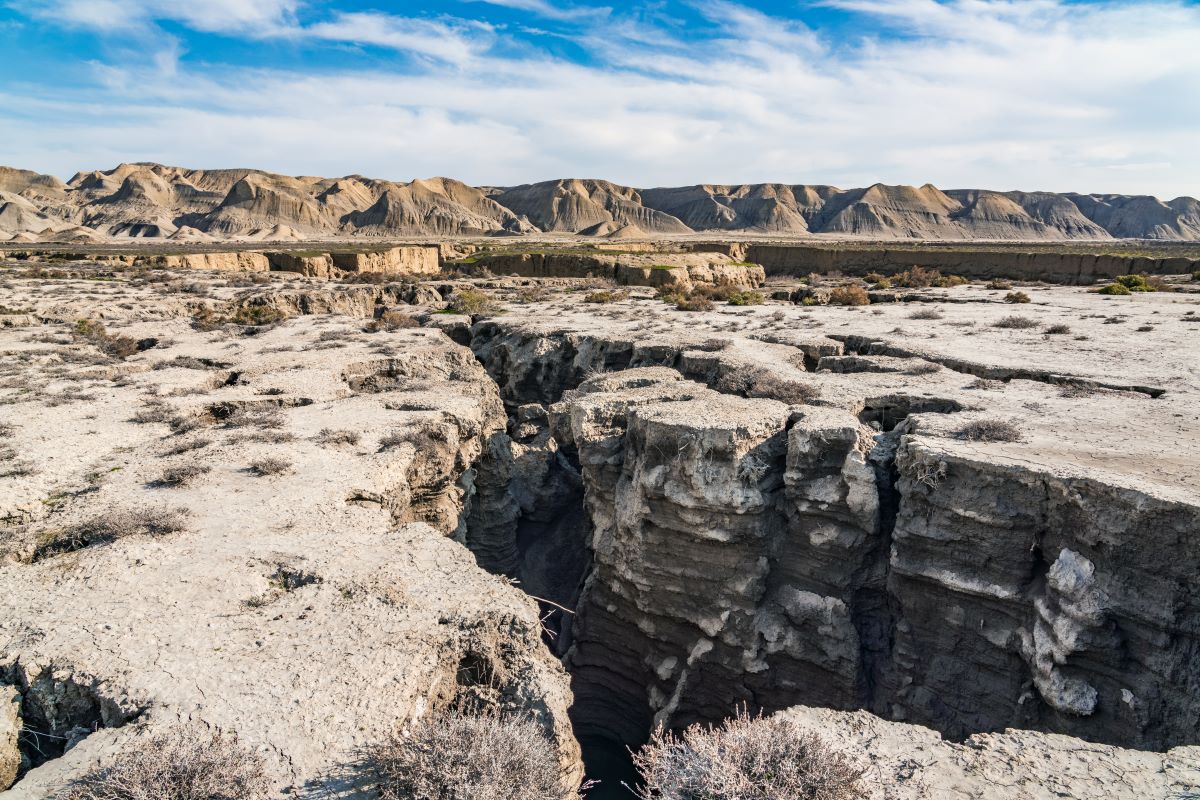Are You in an Earthquake Zone? States Most at Risk
Are you living on shaky ground? Some states in the U.S. are at a higher risk for earthquakes, and you might be in one of them. Here’s a look at the 17 states most at risk, backed by up-to-date science and research.
1. California

California is notorious for its earthquake activity, especially along the San Andreas Fault. The 1989 Loma Prieta and the 1994 Northridge earthquakes caused widespread devastation. Scientists warn of the “Big One,” a potentially catastrophic quake expected within the next 30 years.
2. Alaska

Alaska experiences more large earthquakes than any other state, including the second most powerful earthquake ever recorded in 1964, which measured 9.2 on the Richter scale. The state’s unique tectonic setting means it’s constantly at risk.
3. Washington

Washington State is threatened by the Cascadia Subduction Zone, capable of producing mega-quakes of magnitude 9.0 or higher. The 2001 Nisqually earthquake was a wake-up call for the region.
4. Oregon

Oregon shares the Cascadia Subduction Zone with Washington, making it equally vulnerable. A major quake here could trigger tsunamis that would devastate coastal communities.
5. Nevada

Nevada ranks third in the nation for the number of earthquakes. The state sits on several active fault lines, including the Walker Lane Seismic Zone, which has produced significant quakes in the past.
6. Hawaii

Hawaii’s volcanic activity makes it a hotspot for earthquakes. The 2018 eruption of Kilauea was accompanied by hundreds of quakes, highlighting the constant seismic activity in the region.
7. Utah

Utah is crisscrossed by faults, with the Wasatch Fault posing the greatest threat. A major earthquake here could have severe consequences for Salt Lake City and surrounding areas.
8. Idaho

Idaho experiences frequent seismic activity, particularly around the Intermountain Seismic Belt. The 1983 Borah Peak earthquake, at a magnitude of 6.9, remains a stark reminder of the state’s vulnerability.
9. Montana

Montana’s quake risk is centered around the Hebgen Lake area, where a 7.2 magnitude earthquake struck in 1959, causing massive landslides and dam failures.
10. Wyoming

Wyoming, home to Yellowstone National Park, is a ticking time bomb under constant seismic surveillance. The Yellowstone Caldera, also known as the “supervolcano,” has the potential to unleash a catastrophic eruption. Scientists estimate that if this supervolcano were to erupt, it could spew ash across the entire United States, causing a “volcanic winter” and leading to massive loss of life and agricultural devastation.
11. Missouri

Missouri’s New Madrid Seismic Zone is one of the most active in the U.S. The 1811-1812 New Madrid earthquakes were among the most powerful in North American history, reshaping the landscape and affecting the course of the Mississippi River.
12. Arkansas

Arkansas shares the New Madrid Seismic Zone with Missouri, making it susceptible to powerful quakes. The region’s seismic activity remains a significant threat to the state.
13. Tennessee

Tennessee also lies within the New Madrid Seismic Zone. The state has seen increased earthquake activity, raising concerns about preparedness and resilience.
14. South Carolina

South Carolina’s Charleston area was devastated by a 7.0 magnitude earthquake in 1886. The state’s geology makes it prone to future seismic events, and preparedness is key.
15. Oklahoma

Oklahoma has experienced a dramatic increase in earthquakes due to wastewater injection from oil and gas production. The state now faces a high risk of induced seismicity, with quakes becoming a regular occurrence.
16. Texas

Texas, particularly around the Dallas-Fort Worth area, has seen a surge in earthquakes linked to fracking activities. This induced seismicity poses a growing risk to residents and infrastructure.
17. New York

New York, especially the Adirondack region, has a surprising level of seismic activity. The state’s geological faults can produce significant earthquakes, making preparedness essential.
18. Pennsylvania

Pennsylvania has also seen increased seismic activity, partially due to fracking. The state is crisscrossed by several fault lines that pose a risk for future earthquakes.
Are You Ready for the Shake?

Living in one of these high-risk states means being prepared is crucial. Have you taken steps to earthquake-proof your home and prepare an emergency kit? It’s not a matter of if, but when the next big one will hit. Stay safe and be prepared!
Banned in the USA: 14 Everyday Items We Can’t Have

Ever feel like America’s rulebook was written by someone with a dartboard? Across the pond or down under, things get even wackier. Let’s take a walk on the wild side of global “Do’s” that are definite “Don’ts” in the Land of the Free. Are you ready to find out just how bizarrely different the world can be? Banned in the USA: 14 Everyday Items We Can’t Have
Gone From the Shelves: Why 18 American Staples Vanished

Over the years, various foods that were once staples in American kitchens have been banned or are no longer allowed to be sold due to health, environmental, or ethical reasons. Here’s a list of 18 such items, detailing why they’ve been pulled off the market. Do you remember any of these? Gone From the Shelves: Why 18 American Staples Vanished
Eat & Drink at Your Own Risk: 20 Foods to Keep Away From Your Family

When it comes to food and drinks, not all choices are created equal. Some items on the shelves are so bad for your health that they’re almost legendary. Here’s a list of some of the absolute worst food and drink products—specific brands included—that you might want to avoid at all costs if you care about your nutritional intake. Eat & Drink at Your Own Risk: 20 Foods to Keep Away From Your Family
Featured Image Credit: Shutterstock / Vastram.
The content of this article is for informational purposes only and does not constitute or replace professional advice.
The images used are for illustrative purposes only and may not represent the actual people or places mentioned in the article.







